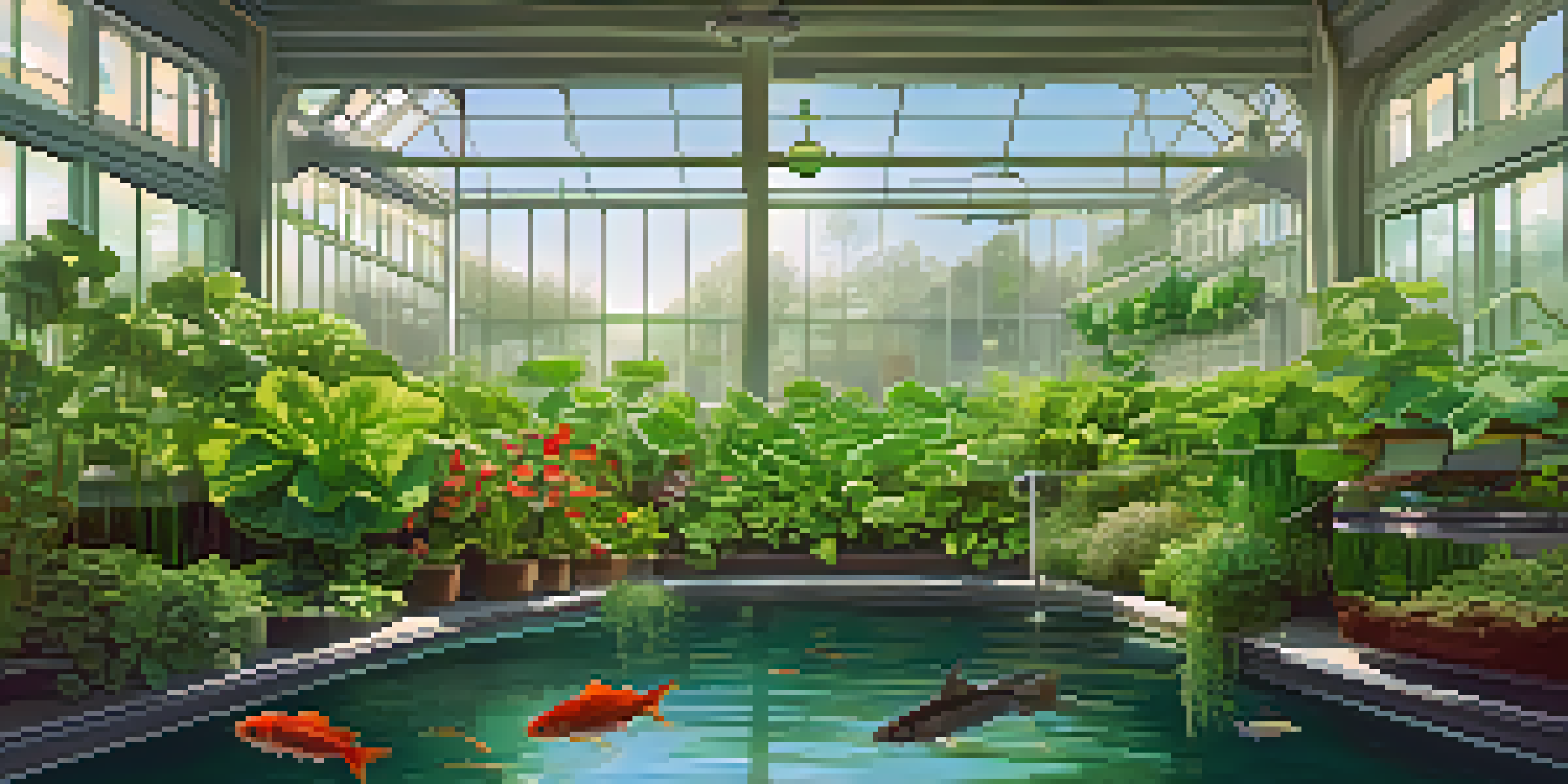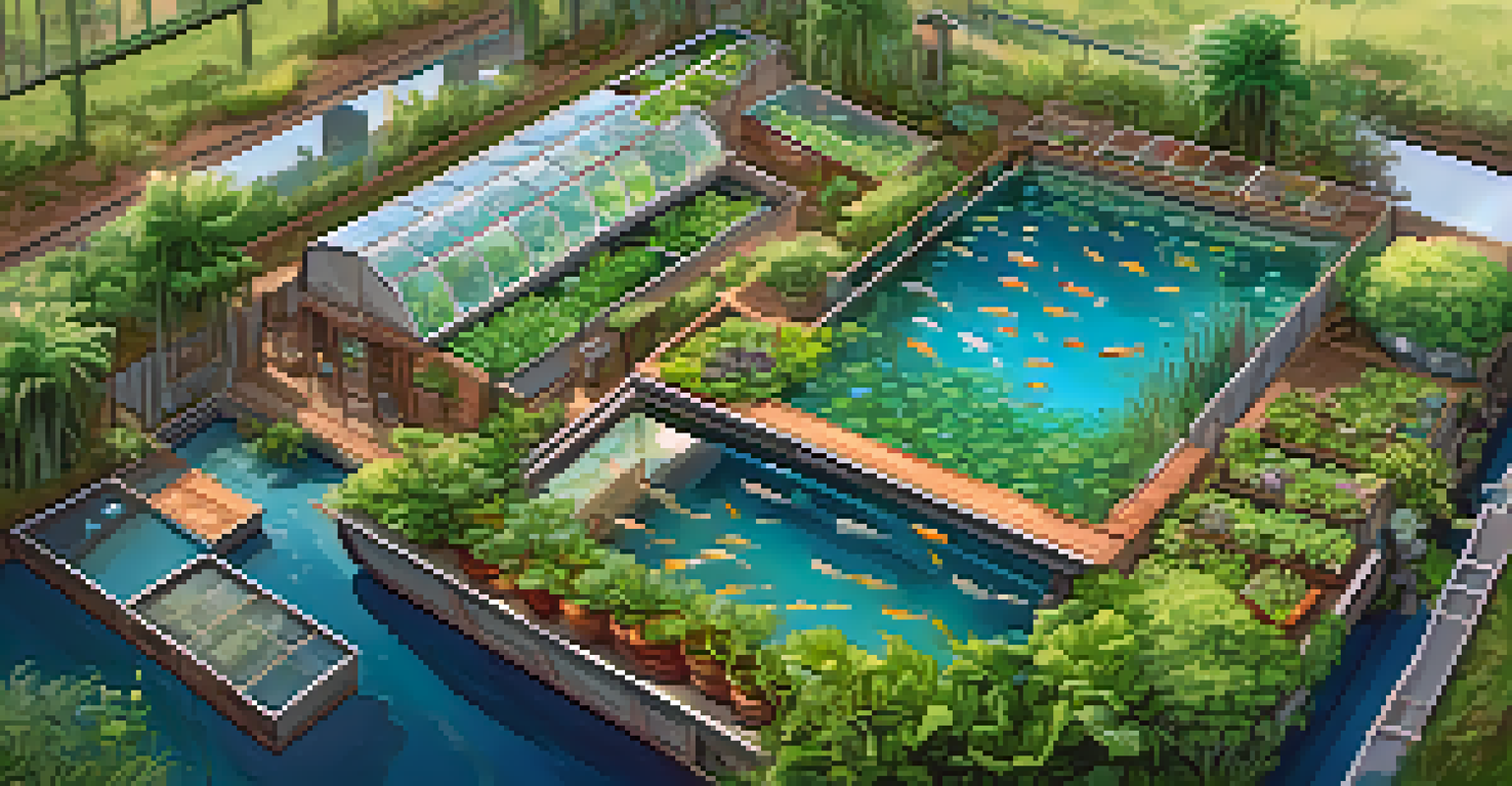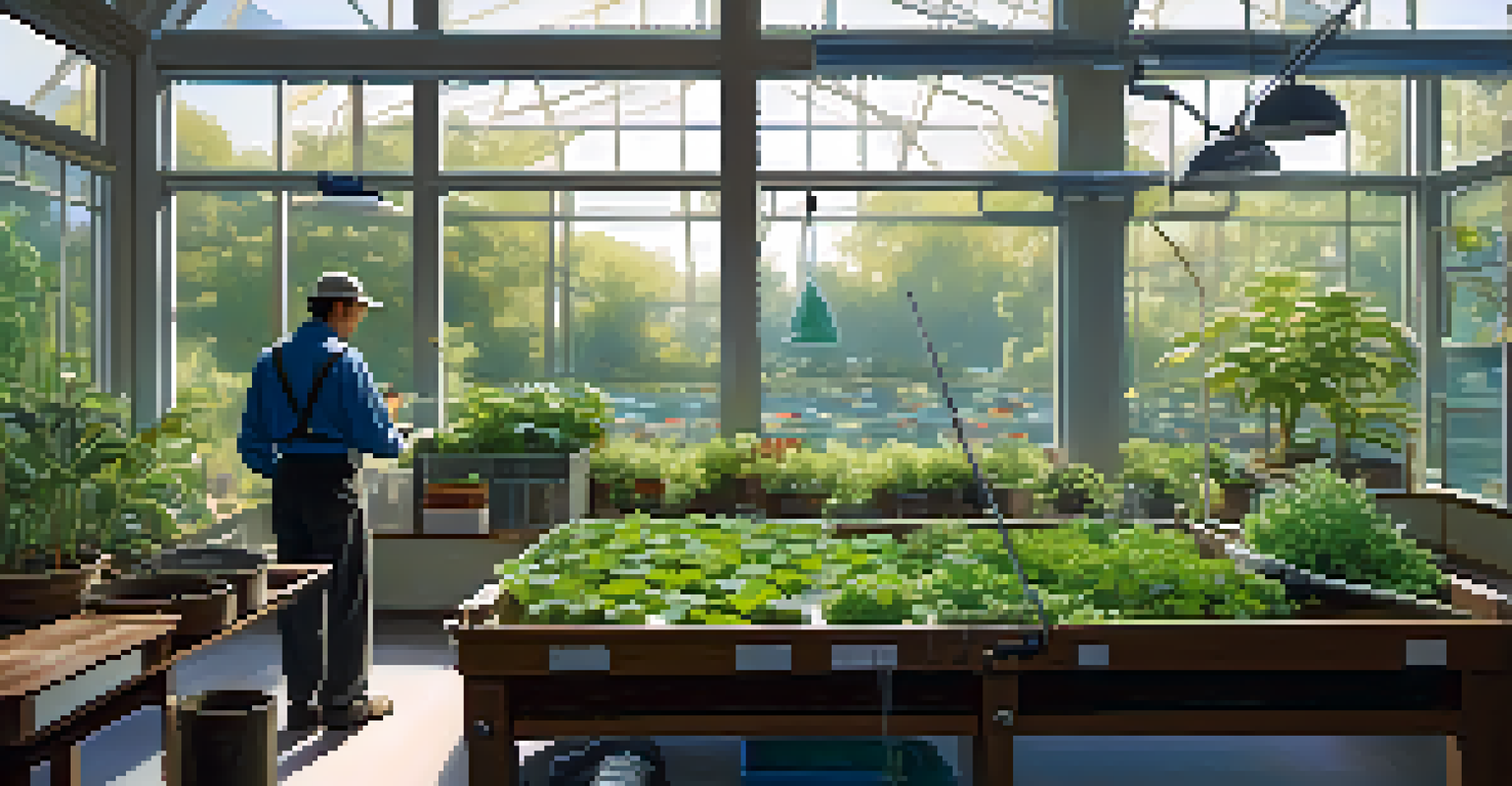Common Aquaponics Mistakes: How to Avoid Them

Neglecting Water Quality: The Foundation of Aquaponics
Water quality is the cornerstone of a successful aquaponics system. If you overlook factors like pH, ammonia, and nitrate levels, your plants and fish can suffer. Regular testing is crucial to catch any imbalances early, ensuring a thriving ecosystem.
Water, like air, is essential to life. It’s the only thing that makes aquaponics possible.
Imagine trying to live in a house with poor air quality; it just wouldn’t work well. Similarly, your fish and plants need a clean, balanced environment to flourish. By prioritizing water quality, you set the stage for a robust system.
Implementing a routine maintenance schedule for water quality checks can help you spot issues before they escalate. This proactive approach leads to healthier plants and happier fish, ultimately boosting your aquaponics success.
Overcrowding Your System: Finding the Right Balance
One common mistake is overstocking fish or planting too many crops in a limited space. Just like any living environment, overcrowding can lead to stress and competition for resources. This can result in slower growth and even disease outbreaks.

Think of it like trying to fit too many people into a small room; it just creates chaos. To avoid this, research the appropriate stocking densities for your fish and plan your planting accordingly. This balance will create a more harmonious ecosystem.
Prioritize Water Quality
Regular testing and maintenance of water quality are essential for the health of both plants and fish in an aquaponics system.
Regularly assess your system’s capacity and adjust as necessary. If you notice signs of stress among your fish or plants, it might be time to thin out or expand your setup.
Ignoring Plant Nutrient Needs: Feed Them Right
Many new aquaponics enthusiasts forget that plants have specific nutrient requirements. While fish waste provides a good base, it may not cover all the nutritional needs of your crops. Ignoring this can lead to nutrient deficiencies and poor plant health.
Patience is not simply the ability to wait – it’s how we behave while we’re waiting.
Imagine trying to thrive on a diet of just one food item—it’s not sustainable. Similarly, your plants require a balanced diet of nutrients to grow strong and healthy. Regularly supplementing with organic fertilizers can help maintain this balance.
Monitoring your plants for signs of nutrient deficiencies, like yellowing leaves, will help you adjust your feeding strategy. A little extra care can lead to bountiful harvests and vibrant plants.
Inconsistent Feeding Schedules: Timing is Key
Another common misstep is having an inconsistent feeding schedule for your fish. A stable feeding routine helps maintain a healthy fish population and ensures that waste levels remain optimal for your plants. Skipping days or overfeeding can disrupt the delicate balance.
Imagine how cranky you’d feel if your meals were sporadic or excessive. Your fish experience similar stress when their feeding schedule is erratic. By establishing a consistent routine, you can help your fish thrive and support your aquaponics system.
Balance Fish and Plant Stocking
Avoid overcrowding by researching appropriate stocking densities to create a harmonious and thriving ecosystem.
Keep in mind that fish species have different feeding needs; research your specific fish to tailor your approach. This attention to detail will pay off in the long run.
Forgetting to Cycle the System: Patience Pays Off
New aquaponics gardeners often forget the importance of cycling their system before introducing fish. Cycling helps establish beneficial bacteria that convert fish waste into nutrients for plants. Skipping this step can lead to toxic conditions for your fish.
Think of it like baking a cake—if you skip the preheating step, you’ll end up with a mess. Cycling is essential for creating a stable environment where both fish and plants can thrive. Be patient and allow your system to mature before adding fish.
To cycle your system, you can use fish food or ammonia to kickstart the bacterial growth. This foundational work sets the stage for a successful aquaponics journey.
Overlooking Pest Management: Keep Your Plants Safe
Pests can be a nightmare for any gardener, and aquaponics is no exception. New growers sometimes overlook pest management, leading to infestations that can harm both plants and fish. It’s vital to stay vigilant and address pest issues before they spiral out of control.
Imagine inviting uninvited guests to your home; it’s uncomfortable and disruptive. Similarly, pests can wreak havoc on your system. Regularly inspecting your plants and using organic pest control methods can help keep these unwelcome visitors at bay.
Establish Consistent Feeding Routines
A stable feeding schedule for fish helps maintain optimal waste levels and supports the overall health of your aquaponics system.
Creating a diverse planting scheme can also act as a natural deterrent to pests. A little attention to pest management can protect your hard work and investment.
Neglecting System Maintenance: Regular Checks Matter
Finally, one of the most significant mistakes is neglecting regular maintenance of the system. Just like any other setup, aquaponics requires ongoing care and attention to function effectively. Failing to maintain pumps, filters, and other equipment can lead to costly breakdowns.
Think of your aquaponics system as a car; regular oil changes and check-ups are necessary to keep it running smoothly. Establishing a maintenance routine will help catch potential issues early, ensuring your system operates at its best.

Set reminders for maintenance tasks, and don’t hesitate to consult guides or forums for troubleshooting tips. A well-maintained system not only saves you money but also enhances your overall experience.